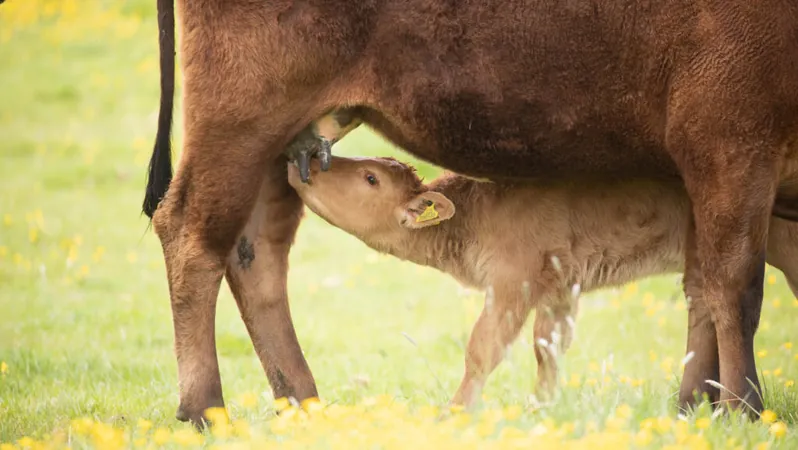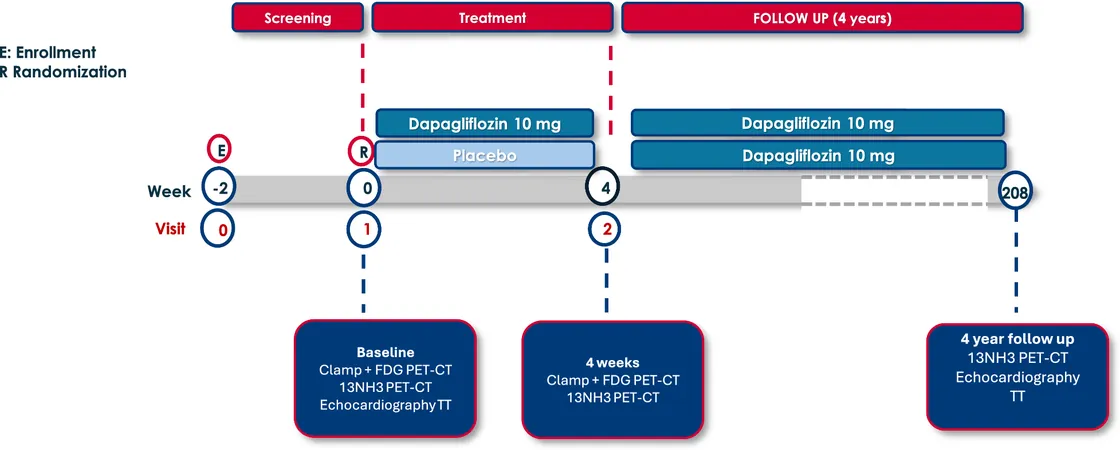
Urgent Plea to Farmers: Alarming Spike in Pneumonia Among Young Calves!
2025-09-10
Author: Wei Ling
Rising Cases of Pneumonia in Young Grazing Calves
Farmers are on high alert as veterinarians report a troubling rise in pneumonia cases among young suckled, grazing calves. This unexpected surge is linked to immunosuppression, particularly during the peak months of May, June, and July.
Colin Mason, a veterinary investigation officer at Scotland Rural College’s Disease Surveillance Centre, highlights that these calves are exposed to favorable conditions — outdoor grazing, suckling their mothers, and access to nutritious grass. "This is when they should thrive, yet we're seeing a worrying increase in respiratory diseases," he noted.
Understanding the Infection: More Than Just Lungworm
While parasitic pneumonia, often caused by lungworm, typically spikes in late summer, this new wave of infections predominantly stems from bacterial sources. Colin stresses that bacterial pneumonia is an opportunistic infection that preys on weakened animals.
Key Factors Behind This Disturbing Trend
The rise in pneumonia cases can be traced to several critical predisposing factors:
1. Tick-Borne Diseases
Tick populations are surging, contributing to an estimated 20% of respiratory illnesses in first-grazing suckler calves. Conditions like tick-borne fever can severely hinder the immune response by impacting white blood cells, posing a significant risk to cattle.
Farmers are advised to steer clear of heavily vegetated or long grass areas to mitigate these risks. Considering the rise of tick-related illnesses, there's a pressing need for innovative strategies beyond mere chemical controls, including potential breeding for tick-resistant cattle.
2. Nutritional Deficiencies
Vitamins E and selenium play vital roles in maintaining robust immunity, especially among fast-growing calves. Alarmingly, over half the calves undergoing post-mortem examinations between 2016 and 2020 displayed deficiencies in these critical nutrients.
Colin urges farmers to ensure proper supplementation for suckler cows throughout critical periods, particularly during outwintering and after turnout, so trace elements are passed to calves through their mother’s milk.
3. Bovine Viral Diarrhoea (BVD)
BVD is another hidden culprit that dampens the immune systems of affected calves. Engaging with a veterinarian to monitor and manage BVD within herds is essential. Strategies should include testing, vaccination, and the removal of persistently infected animals.
4. Coccidiosis Risks
This common gut infection can significantly lower a calf's resilience, often leading to respiratory diseases after an initial bout of gut issues. Colin highlights the importance of monitoring and treating coccidiosis alongside ensuring exceptional hygiene.
Act Now: Investigate Unexplained Calf Deaths
Any unexplained calf deaths, particularly around the eight-week mark, should trigger immediate investigation. Colin alerts farmers that fatalities at this young age, especially due to respiratory issues, indicate serious underlying problems.
In a time when young calves are expected to flourish, this alarming trend calls for proactive measures and collaboration with veterinary professionals to safeguard their health and well-being.



 Brasil (PT)
Brasil (PT)
 Canada (EN)
Canada (EN)
 Chile (ES)
Chile (ES)
 Česko (CS)
Česko (CS)
 대한민국 (KO)
대한민국 (KO)
 España (ES)
España (ES)
 France (FR)
France (FR)
 Hong Kong (EN)
Hong Kong (EN)
 Italia (IT)
Italia (IT)
 日本 (JA)
日本 (JA)
 Magyarország (HU)
Magyarország (HU)
 Norge (NO)
Norge (NO)
 Polska (PL)
Polska (PL)
 Schweiz (DE)
Schweiz (DE)
 Singapore (EN)
Singapore (EN)
 Sverige (SV)
Sverige (SV)
 Suomi (FI)
Suomi (FI)
 Türkiye (TR)
Türkiye (TR)
 الإمارات العربية المتحدة (AR)
الإمارات العربية المتحدة (AR)